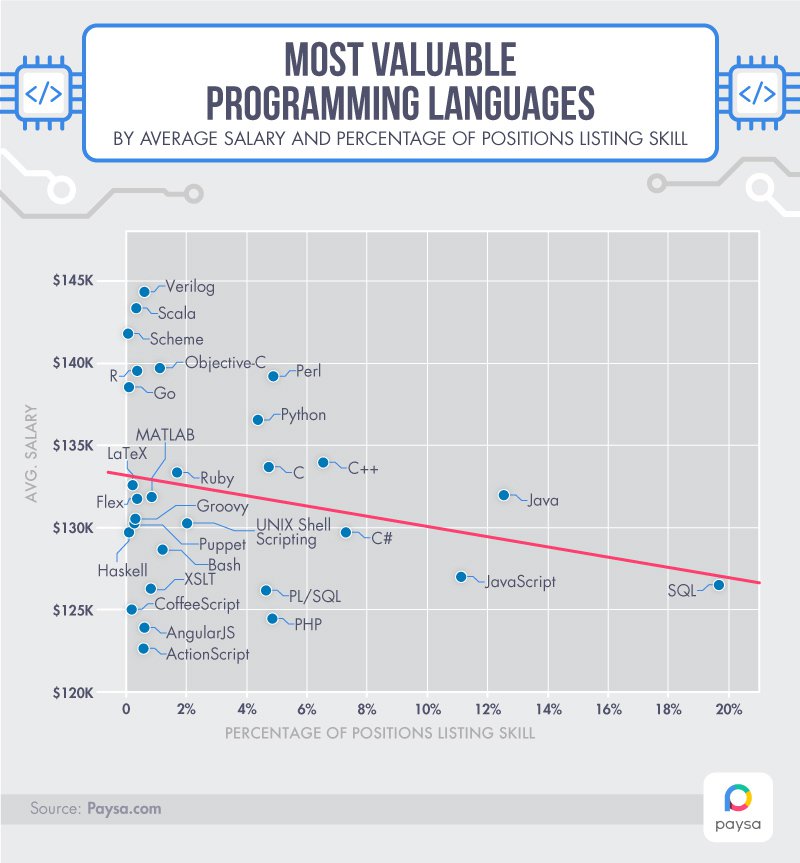Salaries and Job Offerings Categorized by Programming Language
The Paysa Blog recently featured a post Silicon Valley’s Most Valuable Skills in which they looked at the most valuable software development skills in the United States in terms of average salary and in terms of job openings listing the skill. Of particular interest to me was the portion of the post on programming languages and how average salaries and number of opportunities correlate to each of the listed programming languages. I briefly summarize some of the observations I found interesting in this post and refer interested parties to the original post for further details on the methodology and results. For anyone wanting a slideshow providing a high-level summary of this post that highlights nine programming languages associated with numerous job listings and with salaries over $120,000 (US) in the United States, see 9 tech skills that pay over $120,000 and are in demand.
Perhaps the best way to highlight what I found most interesting in the post Silicon Valley’s Most Valuable Skills is to look at one of the charts featured in the post.
The blog post summarizes a key observation from the collected data depicted in the chart above: “We found that skills considered to be less common often resulted in a higher salary.” As an example, the post describes how the increasingly less commonly requested skill of Objective C (because of the ascent of Swift) is one of the most highly compensated and the most highly requested programming language skill on the chart (SQL) is associated with one of the lowest average salaries.
Another emphasized observation in this post is, “Almost 20 percent of the jobs we saw indicated a need or understanding of SQL.” This is more evidence that it benefits software developers to avoid contracting SQLphobia.
There is coverage of regional salary and available positions related to programming languages in this post, but I would have loved to see the salary and job openings mapped to individual metropolitan areas in the United States in a chart or charts because the “same salary” can actually quite different from a “supported lifestyle” point of view between areas. Speaking of regions, this information is obviously less useful to developers residing and/or working for employers outside of the United States, but I still think these observations can provide interesting perspective for those developers. It was a bit surprising to me that Paysa found that “San Francisco companies are looking for applicants who specialize in Java” and that “Boulder, Colorado, proved to be the city where JavaScript skills are most in demand.”
Software development opportunities are about more than monetary compensation. Many of the best software developers I know want interesting challenges, the ability to learn new things, and other non-monetary compensation from their work. Even compensation is often tricky to compare as benefits packages and perks can differ significantly. Another factor that complicates things is the use of “average salaries” because these averages can be significantly affected by region and may not represent large ranges in compensation for certain programming language skills. However, after acknowledging these caveats, I still find it interesting to see which programming languages have, according to Paysa’s collected data, the highest average associated salaries and the most available job openings in the United States.
| Reference: | Salaries and Job Offerings Categorized by Programming Language from our JCG partner Dustin Marx at the Inspired by Actual Events blog. |







AngularJS is not a programming language.
Where are these 6 figure salaries? That must be a California only graph. There are next to no salaries like that in Connecticut.